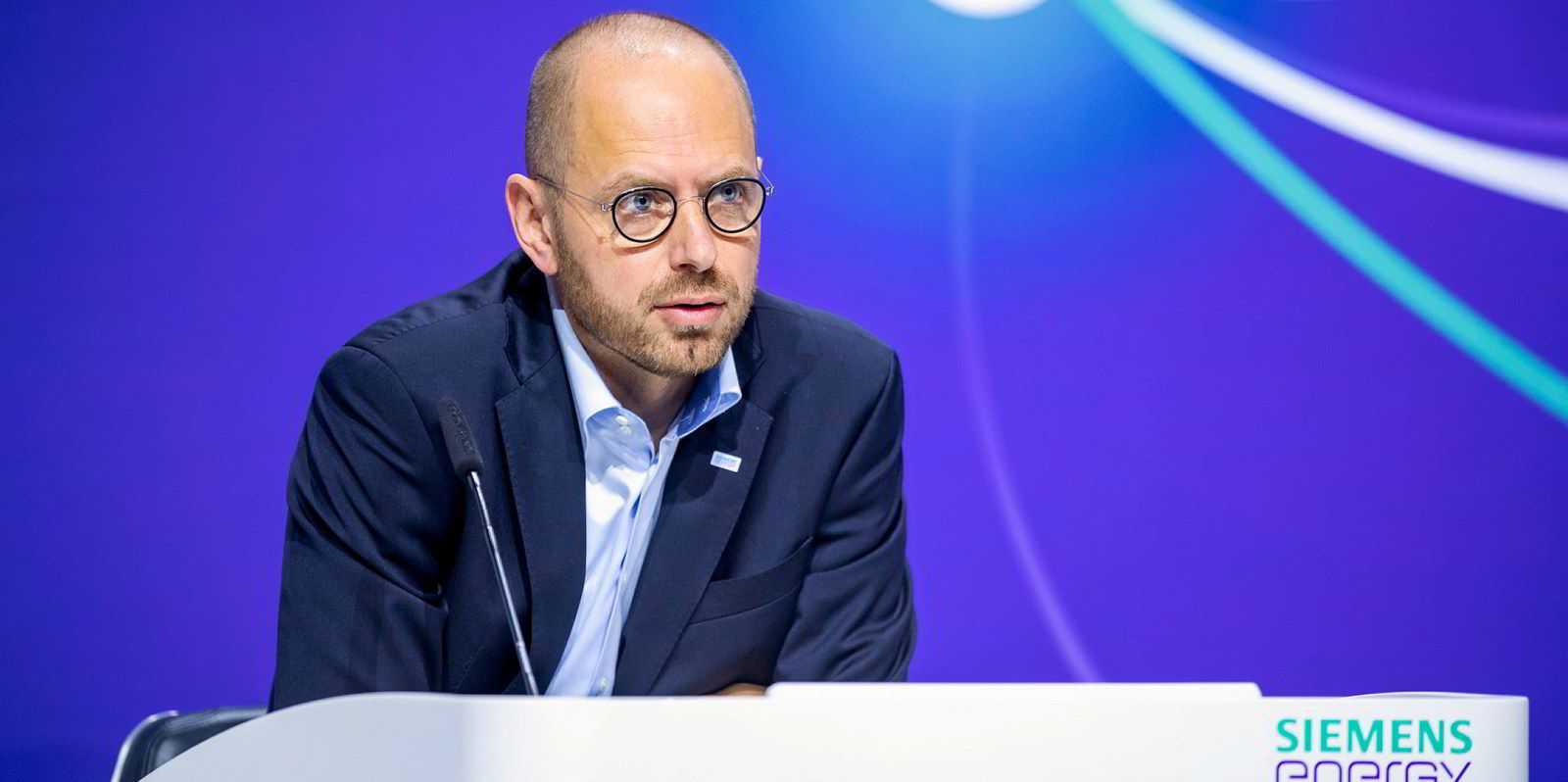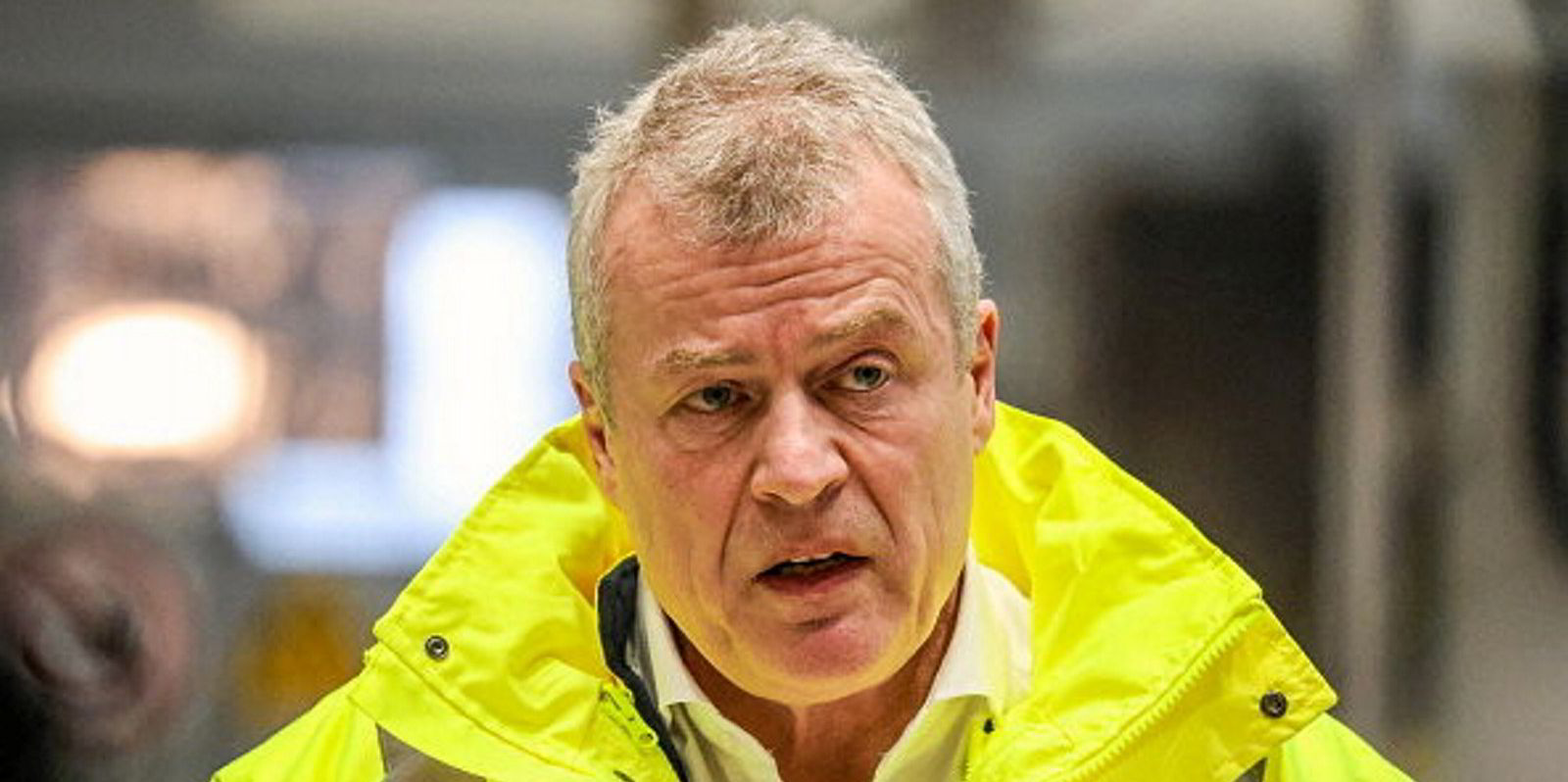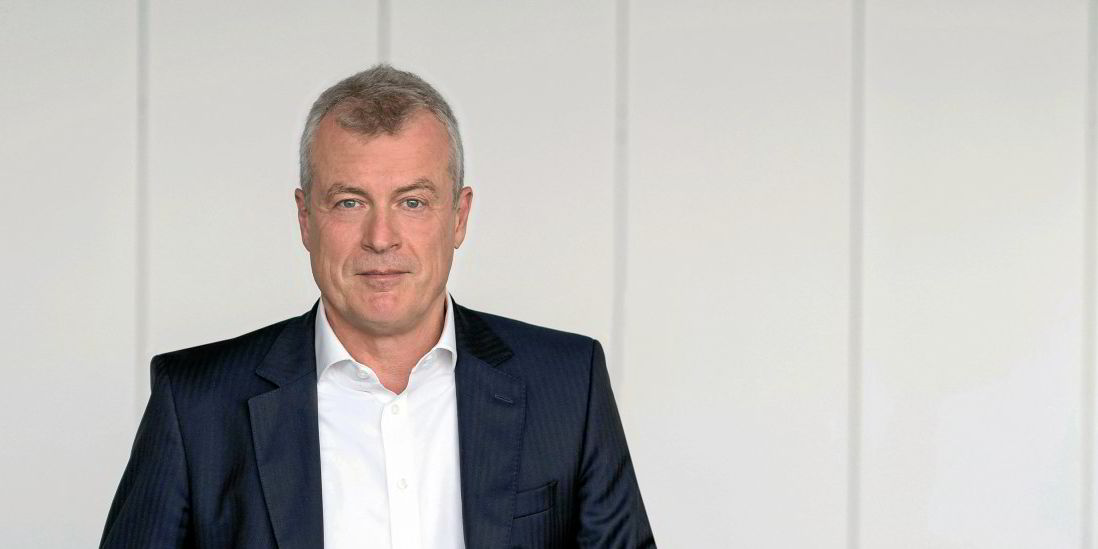It’s possible that I shall make an ass of myself. But in that case one can always get out of it with a little dialectic. I have, of course, so worded my proposition as to be right either way (K.Marx, Letter to F.Engels on the Indian Mutiny)
Sunday, July 09, 2023
TIMES NOW
Jul 7, 2023 #rahulgandhi #gujarathighcourt
#rashidalviIn today's episode of India Upfront, anchor Padmaja Joshi will be discussing how the Gujarat High Court rejected Rahul Gandhi's petition. Rahul Gandhi's petition was heard by the Gujarat High Court today, four months after his conviction. Rahul was stripped of his parliamentary Membership after the Surat Session Court found him guilty in the Modi Surname defamation case. This followed a huge ruckus in Parliament. Rahul Gandhi was expecting relief from the Gujarat High Court Today. We are joined by a few panellists." In the Teesta Setalvad case, the SC questioned the Gujarat HC about the reason for such haste. This shows the SC doesn't always uphold the judgements of the Gujarat HC." said Lokesh Jindal.
July 08, 2023
Agence France-Presse

Share
TORONTO - A few hundred members of Canada's Sikh community demonstrated outside the Indian Consulate in Toronto on Saturday to protest the unsolved killing of one of their leaders last month in the Vancouver, British Columbia, area.
They accused the Indian government of being responsible for the gunning down of Hardeep Singh Nijjar, president of a Sikh temple and campaigner for the creation of an independent Sikh state that supporters hope to call Khalistan.
"When an Indian agency and system commit a crime, they have to be held accountable," Kuljeet Singh, spokesperson for Sikhs for Justice, a US-based organization behind the rally, told AFP.
Nijjar, whom India had declared a wanted terrorist, was killed on June 18 in Surrey, a suburb of Vancouver that is home to one of the largest Sikh populations in Canada.
Nijjar advocated for the creation of an independent Sikh state to be carved out of parts of northern India and perhaps part of Pakistan. India accused Nijjar of carrying out terrorist attacks in India, a charge he denied.
The demonstrators, almost exclusively men, carried yellow flags with blue logos representing their separatist movement, and shouted "Khalistan! Khalistan!"
Setting off from the Toronto suburbs, they arrived in front of the Indian Consulate, where they were greeted by around 50 members of the diaspora in support of the Indian government.
"They have a poster here calling to kill Indian diplomats. We are concerned because these groups have committed terrorist acts in the past and politicians are not taking actions," one of the counterdemonstrators, Vijay Jain, an IT consultant, told AFP.
A line of 20 police officers intervened to separate the two groups, and one Sikh protester was taken away after forcing down a barrier and running to the other side.
Since the killing of the Sikh leader, tensions have risen between Canada and India.
New Delhi regularly accuses Ottawa of laxity in its handling of Sikh protesters in Canada.
"We have asked the Canadian government to take all necessary measures to ensure the safety of our diplomats," Arindam Bagchi, spokesperson for India's foreign minister, said Thursday.
Canada is home to the largest number of Sikhs outside their home state of Punjab, India.

CANADA: PUNJABI ACTIVISTS PLAN PROTESTS IN OTTAWA, TORONTO, AND VANCOUVER JULY 8 NEAR INDIAN CONSULATES TO DENOUNCE INDIAN GOVERNMENT.
Punjabi activists plan protests in Ottawa, Toronto, and Vancouver in Canada July 8 to denounce Indian government. Tight security likely.
Event
Activists associated with the Sikhs for Justice group plan to demonstrate in Ottawa and Toronto, Ontario Province, as well as Vancouver, British Columbia Province, July 8 to denounce the Indian government and show support for the Khalistan independence movement. Protesters will center their action on the Indian High Commission in Ottawa and the Indian consulates in Ontario, Toronto, and Vancouver amid allegations of the Indian high commissioner's and consul-general's involvement in the June 18 killing of pro-Punjabi activist Hardeep Singh Najjar in the Vancouver area. In Toronto, demonstrators will start with a rally at the Great Punjab Business Centre in Malton at 12:30 before proceeding to the Indian Consulate in central Toronto. Start times for other protests are currently unclear. Sikhs for Justice has reportedly called for supporters to "besiege" Indian government buildings within Canada.
A heightened security presence is almost certain near Indian consulates in Canada and near any protest sites. Related demonstrations are also possible near Sikh gurdwaras or near locations associated with Indian communities. Localized transport and business disruptions are likely near protest sites. Counterdemonstrations are possible. Clashes may occur between police and protesters or rival activists.
Context
Hardeep Singh Najjar was a controversial Punjabi activist supporting the cause of Khalistani independence. Najjar was the president of the Guru Nanak Sikh Gurdwara, head of the Khalistan Tiger Force (KTF) separatist group, and was involved in the Sikhs for Justice (SFJ) activist group. The government of India designated Najjar a terrorist for involvement in separatist activities and allegedly conspiring to kill a Hindu priest. Two assailants shot Najjar in his car in the parking lot of the Guru Nanak Sikh Gurdwara in Surrey, British Columbia, in the Vancouver area, the evening of June 18.
The aftermath of the killing of Najjar occurs in the midst of heightened tensions between elements of the Canadian Sikh and Punjabi community and the government of India. The Vancouver and Toronto areas, particularly Surrey, British Columbia, and Brampton, Ontario, contain sizeable populations of Punjabi Sikhs; some members of this community support the "Khalistan" movement, calling for the independence of the Indian state of Punjab. In response to posters affiliated with the July 8 demonstrations alleging Indian government figures' involvement in the Najjar killing, Indian Minister of External Affairs Subrahmanyam Jaishankar called on the Canadian government to do more to protect Indian government officials. On June 8, Jaishankar urged the Canadian government to apologize for the presence of a parade float in Brampton that allegedly positively depicted the 1984 killing of Indian Prime Minister Indira Gandhi by her Sikh bodyguards. On March 25, the Indian government summoned the Canadian High Commissioner in India to discuss protests outside the Indian Consulate in Vancouver in support of Sikh separatist Amritpal Singh, who was wanted in India.
CRISIS24
07 JUL 2023 |
Of course, this isn't an actual "hole" as one might assume after hearing the term.
Mrigakshi Dixit
Created: Jul 04, 2023
SCIENCE
%2F2023%2F07%2F04%2Fimage%2Fjpeg%2FvQVBsoTBD64JTd3OgSK2AXJPuACrvPVBQJaYnqC5.jpg&w=3840&q=75)
A massive, mysterious "gravity hole" deep beneath the Indian Ocean has perplexed scientists for decades.
Of course, this isn't an actual "hole" as one might assume after hearing the term.
Instead, it is a huge anomaly in the Earth's crust with significantly lower gravity than the average.
This depression is scientifically known as the Indian Ocean geoid low (IOGL), and it covers over two million square miles and sits around 600 miles beneath the Earth's crust.
It was found in 1948 by Dutch geophysicist Felix Andries Vening Meinesz during a ship-based gravity study.
However, what causes this "gravity hole" is still being studied.
'The Blob' deep below may be triggered by intense seafloor heatwaves
Scientists finally crack the reason behind unusual deformation in Earth's crust
And researchers from the Indian Institute of Science in Bangalore have illustrated one probable explanation for this mysterious gravity anomaly.
Tracing the origin of the hole
It is not the first time geologists have researched the IOGL. Multiple previous studies concentrated on its current status without looking into its origins. And this new study focuses on the latter to establish how ancient influences shaped IOGL's current condition.
The researchers investigated the gravity dip using multiple computer models that were fed information on how the region altered over the last 140 million years due to the movement of Earth's tectonic plates. They also employed several factors to simulate molten material convection within the mantle
The findings indicated that IOGL exists due to a different mantle structure combined with another mantle anomaly, the African blob or large low-shear velocity province (LLSVP).
They discovered that certain tectonic plate portions had plunged into the mantle beneath Africa, triggering plumes under the Indian Ocean.
“What we’re seeing is that hot, low-density material coming from this LLSVP underneath Africa is sitting underneath the Indian Ocean and creating this geoid low,” Attreyee Ghosh, one of the authors of this study, told Scientific American.
This geoid started to form 20 million years ago
The team believes the geoid gained its current form some 20 million years ago and will likely continue as long as mantle material flows.
Geologists believe that this mantle structure beneath the Indian Ocean was probably produced by the leftovers of a long-lost Tethys Ocean's seabed. About 200 million years ago, this ancient ocean divided two supercontinents, Laurasia and Gondwana.
Africa and India were formerly part of Gondwana, but around 120 million years ago, what is now India drifted north into the Tethys Ocean, establishing the Indian Ocean behind it.
The authors highlight that there could also be other underlying facts for the IOGL's existence. Nevertheless, the "Gravity Hole" serves as a reminder that the Earth still harbors many mysteries that must be studied and understood.
The results have been published in Geophysical Research Letters.
Study abstract:
The origin of the Earth's lowest geoid, the Indian Ocean geoid low (IOGL), has been controversial. The geoid predicted from present-day tomography models has shown that mid to upper mantle hot anomalies are integral in generating the IOGL. Here we assimilate plate reconstruction in global mantle convection models starting from 140 Ma and show that sinking Tethyan slabs perturbed the African Large Low Shear Velocity province and generated plumes beneath the Indian Ocean, which led to the formation of this negative geoid anomaly. We also show that this low can be reproduced by surrounding mantle density anomalies, without having them present directly beneath the geoid low. We tune the density and viscosity of thermochemical piles at core-mantle boundary, Clapeyron slope and density jump at 660 km discontinuity, and the strength of slabs, to control the rise of plumes, which in turn determine the shape and amplitude of the geoid low.
The pledge Tesla made in China includes not engaging in 'abnormal' pricing and prioritizing quality
Published July 7, 2023
By Aislinn Murphy FOXBusiness
Tesla on Thursday reportedly agreed to promote "core socialist values" with over a dozen Chinese car manufacturers.
The Texas-based electric vehicle (EV) and clean energy company run by Elon Musk did so as part of a pledge to the Chinese auto industry, The Wall Street Journal reported.
The four-point pledge reportedly involved agreeing not to engage in "abnormal" pricing, to prioritize quality and not use false publicity. The plege promises to "take on the heavy responsibility of maintaining steady growth, strengthening confidence and preventing risk," according to the outlet.
The signing reportedly took place in Shanghai at a conference.
TESLA'S ELON MUSK MEETS CHINA'S FOREIGN MINISTER, SAYS HE IS OPEN TO EXPANDING BUSINESS IN COUNTRY: OFFICIAL

FOX Business reached out to Tesla about the pledge but did not receive a response by the time of publication.
The Journal identified BYD, NIO, XPeng, SAIC Motor, FAW Group and Geely as some of the other signatories. Apart from Tesla, all of them reportedly were Chinese.
The EV market in China has seen a price war as Tesla and some other companies have reduced prices to encourage more sales. That, according to the Journal, has had a particular impact on smaller EV makers, though prices for some brands of cars have since experienced increases.
The factory Tesla operates in Shanghai had over 93,000 deliveries in June, according to the Journal, which cited the China Passenger Car Association. The company described its Shanghai factory as its "main export hub" in its first-quarter shareholder deck, reporting it had an "installed annual vehicle capacity" of over 750,000.
Tesla recently started offering its buyers an opportunity to earn extra incentives through referrals from existing customers via a "Refer and Earn" program that is becoming available in markets including the U.S., China, Germany and others.
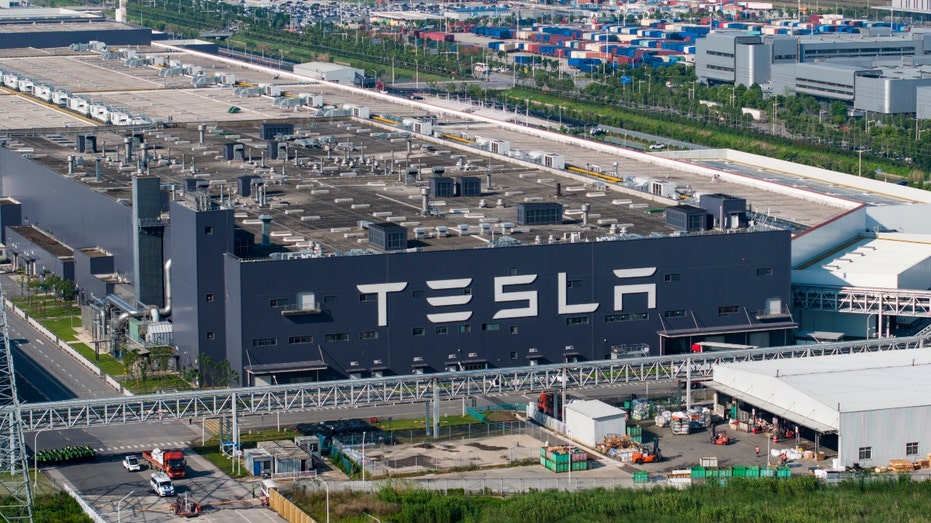
An aerial view of the Tesla Shanghai Gigafactory June 2, 2023, in Shanghai. (VCG/VCG via Getty Images / Getty Images)
For customers in China, the company said it would give those buying a Model Y or Model 3 a rebate worth $484 with a referral.
Musk, who has been Tesla’s CEO since 2008, went to China in late May, at points getting together with the communist country’s foreign minister and stopping by the Shanghai factory.
CEOs of other American companies have also visited for conferences and various events in recent months, FOX Business previously reported.
Tesla released overall vehicle production and delivery figures earlier in July, with the former coming in at about 479,700 and the latter at roughly 466,100 for the second quarter.
Tesla Inc
The value of Tesla shares has risen nearly 154% from the start of the year.
Joe Toppe contributed to this report.
KILLS 2, 1 MIA
Mexican Pemex estimates platform fire shut in 700,000 barrels of oil

MEXICO CITY (Reuters) - Mexican oil company Pemex estimates that a deadly fire on a major offshore platform off the southern edge of the Gulf of Mexico has led to the loss of 700,000 barrels of crude oil production so far, while one person remains missing, the CEO of the state company, Octavio Romero, said on Saturday.
The fire started early Friday on the Nohoch-A link platform of the company's Cantarell Field and later moved to a compression complex, killing two people. The fire has since been controlled, the company said.
"Today, 700,000 barrels of losses have been reflected (...) because we closed practically all the wells in the area," Romero said via the company's Twitter account.
As of Saturday afternoon, 600,000 barrels of production had resumed, the executive added.
The company said that searchers were still looking for the person who disappeared after the fire in Cantarell, an emblematic asset that produces some 170,000 barrels of oil per day (bpd).
Located in the Bay of Campeche, about 85 kilometers from Ciudad del Carmen, Cantarell is made up of a series of fields in the marine area, and was once one of the world's most productive.
Pemex has suffered a number of industrial accidents in this highly productive zone in recent years. Most of Mexico's crude production, approximately 1.6 million bpd, comes from the shallow waters of the Gulf of Mexico.
(Reporting by Marion Giraldo; Writing by Anna-Catherine Brigida; Editing by Kim Coghill)
CLEAN POWER
Ask Amory Your Questions, Answered By RMI Cofounder Amory Lovins

Volvo Envirnomental Award winner 2007 - Mr Amory Lovins, Mr Amory Lovins, in front of Rocky Mountain Institute, Colorado, USA (Photographer: Tore Marklund), Courtesy of Volvo https://www.media.volvocars.com/us/en-us/media/pressreleases/12834
By RMI
Published
In summer 2023, we launched #AskAmory to collect your questions for RMI’s co-founder Amory Lovins, a world-renowned expert on energy efficiency and renewables. Here, we keep a running list of your questions and Amory’s answers. Submit new questions here and keep an eye out for the answers shared here at rmi.org and on our social media handles.
Q1: How discouraged are you with the lack of progress in getting off of fossil fuels? (Peggy H.)
ABL: I’m not. We need courage, not dis-courage, and you can’t depress people into action. There’s a lot to be en-couraged about. The International Energy Agency’s new faster-efficiency agreement combines with renewables having taken 90+ percent of the market for net new electric generating capacity worldwide, and being the cheapest source of bulk power in countries with 82 percent of world electricity use. US, EU, and Chinese policies are now very supportive. The transition we outlined in Reinventing Fire is nicely on track and accelerating.
RMI strategist Kingsmill Bond nicely explains its dynamics, and how peaking works, in his “Peaking Series.” Putin’s War has blown up the foundations of the fossil-fuel era that underlies his power (see the essay we co-wrote with three colleagues on “From Deep Crisis, Profound Change”). Keep pushing with relentless patience. We’ll get there.
Q2: Are we on the cusp of boring “deep enough, cheap enough” — almost anywhere on Earth — to enable a Deep Hot Dry Rock Geothermal (DHDRG) global energy system? Should we stop wasting time, talent, and capital on building costly new electricity transmission and storage assets, to instead accelerate RD&D for, and proliferation of, thousands of DHDRG plants, the ultimate in DER? (Bill L.)
ABL: No. We can’t wait — though to avoid overbuying grid and storage assets, they should be competed or compared with efficiency and renewables, and those with each other. Very rapid scaling of established and highly competitive efficiency and renewable capacity mustn’t be delayed while researching less mature options. Bill may know something I don’t about deep geothermal technology, and much geothermal drilling does cost about twice as much as best-practice hydrocarbon drilling, but I think deep geothermal’s basic economics looks less exciting than it would need to.
Unless something fundamental I missed has changed since my 2020 summary, I think its encouraging technical progress still doesn’t show a clear case for beating the current market leaders — efficiency, solar, and wind. Geothermal hopes to make 5¢ power in a few decades, but in this decade, unsubsidized renewables are falling from 2¢–3¢ to 1¢/kWh. Nor is there an operational need or a business case for “baseload, firm, dispatchable power.” So I’d encourage more RD&D on Bill’s option, but not hold my breath about the outcome — and fortunately, we have excellent and ample options without it.
Q3: How will integrated design and 10xe engineering affect the path of the Great Disruption forecast by RethinkX? Will it accelerate change? (Gary S.)
ABL: Integrative design could indeed speed that disruption, to great advantage, if it’s quickly recognized and spread. Efficient energy use was half of historic and will be at least half of future global decarbonization. Thus, integrative design’s ability to make the whole efficiency resource severalfold bigger than commonly thought — yet cheaper — is a wonderful opportunity to help renewables displace fossil fuels even faster. My Stanford classes on this subject have identified ~20 scaling vectors I hope to test and spread, so integrative design’s potential to quintuple global energy efficiency by ~2060 can become a prompt reality.
Q4: If you had $1 billion at your disposal and wanted a maximum reduction in the carbon footprint of 700,000 + people in the Northern Nevada, Northern Sierra region comprised of the communities of Reno, Sparks, Carson City, Gardnerville, Incline Village, Pyramid Lake, Fernley, Yerington, and Fallon how would you spend the money? (Jon W.)
ABL: I’d first make you the head of Nevada energy policy, then suggest you spend most of the $1B competitively procuring and debottlenecking efficient and timely use of energy (especially electricity), and of energy-intensive materials, in all sectors — including building the human capacity needed in building trades and other implementing groups, and shifting swiftly to electric mobility. I’d also speed decoupling-and-shared-savings for Nevada’s electricity (already done for gas) and bust barriers to deploying efficiency, demand response, and renewables.
Q5: What’s your vision for helping consumers in the energy transition? Will VP3 [RMI’s Virtual Power Plant Partnership] and Energy Web help consumers? (Deedstack user on Twitter)
ABL: Use methods like on-bill financing to fund deep building retrofits for all, so the household needs no capital investment. Use revenue- and size-neutral feebates to finance superefficient and electric cars. Consider the many other innovative suggestions in RMI’s Reinventing Fire (1999).
Last year’s heat wave in California showed just how important customer participation in demand response is to ensure reliable energy service through the transition. Virtual Power Plants (VPPs) enable this kind of customer participation at scale and provide direct affordability and customer empowerment benefits. Through VPPs, customers enroll their home electric devices to be aggregated together and coordinated with grid operations, providing the same services to the power system as traditional power plants. Homes and businesses that participate in VPPs receive direct compensation, and those that do not still experience lower bills resulting from deferred transmission, distribution, and generation capacity investments that typically get passed on to customers. RMI is working with leading businesses in VPP-related sectors through the Virtual Power Plant Partnership (VP3) to catalyze and scale the market for VPPs.
Q6: We work with small indigenous Communities in Ontario, Canada. In the face of over-regulation and lack of capacity, what are the best tools and practices to get to net zero? (Ketan B.)
ABL: Reinventing Fire is still our best overview of the big picture. I suggest you check with my Stanford colleague Dr. Holmes Hummel to see if the techniques she’s helped small rural electric co-ops to develop might be adaptable in your challenging setting. The economics of simple efficiency gains should be compelling. If your area is anything like the small Alaskan villages I worked with decades ago, modern renewables should be too.
Q7: Pourquoi l’Afrique traine tant dans l’utilisation et le développement des véhicules électriques? Nous sommes à la recherche de bailleurs de fonds pour réaliser un projet d’unités de montage des motos, tricycles électriques au Mali et en Afrique de l’Ouest.
Translation:
Good morning. Why is Africa lagging so much in the use and development of electric vehicles? We are looking for donors to carry out a project for assembly units of motorcycles and electric tricycles in Mali and West Africa. (Amara D.)
ABL: I’m not familiar with your region’s specific conditions, but imagine they might resemble those that are driving huge growth in two- and three-wheeled e-vehicles in rural and urban China and India: more than 300 million such vehicles are now on the road globally, and they’re half of China’s huge EV growth. About 42% of 2022 two- and three-wheeler sales were electric, heading for 80% in another decade or two, and they’re already saving a million barrels of oil per day — more than all the bigger e-vehicles combined. Congratulations and thank you — you’re on the right track.
Check out RMI’s Powering Electric Two- and Three-Wheelers with Rural Minigrids in Nigeria and India to learn more.
Q8: Have the carbon costs of Virgin Galactic commercial flights been calculated, and if so, what are they? I have the same question for bitcoin currencies. (Carol O.)
ABL: Some estimates have been published (e.g. in The Conversation, the Guardian, and Inside Climate News) but I have not checked any of them, and suggest you ask Virgin Galactic, which has probably done the analysis. Black carbon may be a more concerning rocket emission than CO2. I haven’t tracked whether hydrogen/oxygen rockets are a realistic candidate.
Bitcoin has a large energy/carbon literature, summarized here. Fortunately, if worthwhile uses are found for cryptocurrency, there are orders-of-magnitude less-energy-intensive ways to create it than Bitcoin’s obsolete proof-of-work method.
By Amory Lovins
© 2021 Rocky Mountain Institute. Published with permission. Originally posted on RMI.
Blade break hits giant brand-new wind turbine as Siemens Gamesa woes mount
Stricken manufacturer launches investigation as parent group Siemens Energy reportedly sets up taskforce to probe issues at OEM
Siemens Energy CEO Christian Bruch has started a probe.Photo: Siemens Energy
Siemens Gamesa is investigating a blade failure on one of its most powerful, newest turbines, with parent group Siemens Energy said to be setting up a taskforce to investigate problems at the stricken wind power giant.
Siemens Gamesa confirmed that on Wednesday this week a blade broke on one of its machines at the Santo Agostinho wind farm in Brazil.
Shocked Siemens Gamesa CEO Eickholt: 'Problems much worse than I thought possible'Read more
A spokesperson told Recharge: “There were no injuries, and a safety zone around the turbine has been established. Siemens Gamesa immediately started an internal investigation to determine the root cause of this incident. Until the analysis is completed, we cannot speculate on the cause of the incident.”
The 434MW, Santo Agostinho, which is owned by French energy giant Engie and only started exporting power in March, uses 6.2MW turbines – among the most powerful operating on land globally – from Siemens Gamesa’s 5.X platform.
The 5.X range is currently under intense scrutiny as part of an apparent wide-ranging set of quality issues that have beset the manufacturer and recently forced Siemens Energy to announce a potential new $1bn-plus bill for fixing them.
Siemens Gamesa heads for legal showdown with customer over Indian wind farmRead more
Siemens Energy shares plunged more than 30% in late June following the announcement, when Siemens Gamesa CEO Jochen Eickholt admitted problems at the wind group were “much worse than I thought possible”.
Siemens Energy has set up a special taskforce to investigate the issues at Siemens Gamesa, for which it forked out €4bn ($3bn) for full ownership.
The taksforce will among other matters probe why the problems at the wind OEM were not spotted when the deal was being put together, Reuters reported.
Industry sources confirmed to Recharge that the new taskforce, the second to be set up by Siemens Energy to look at the wind OEM, would examine the quality issues facing Siemens Gamesa, its business plan and legal issues.
RELATED NEWS By Andrew Lee
Wind turbine snaps into pieces as boss says 'it was only checked last year'
Wind
6 July 2023
Wind farm blaze: boss blames 'negative power prices' for strain on old turbine
Wind
5 July 2023
Siemens Gamesa's troubles to delay turnaround but unlikely to spread to competitors
Wind
26 June 2023 7:54 GMT
7 July 2023
Siemens Energy's turbine troubles rattle wind sector
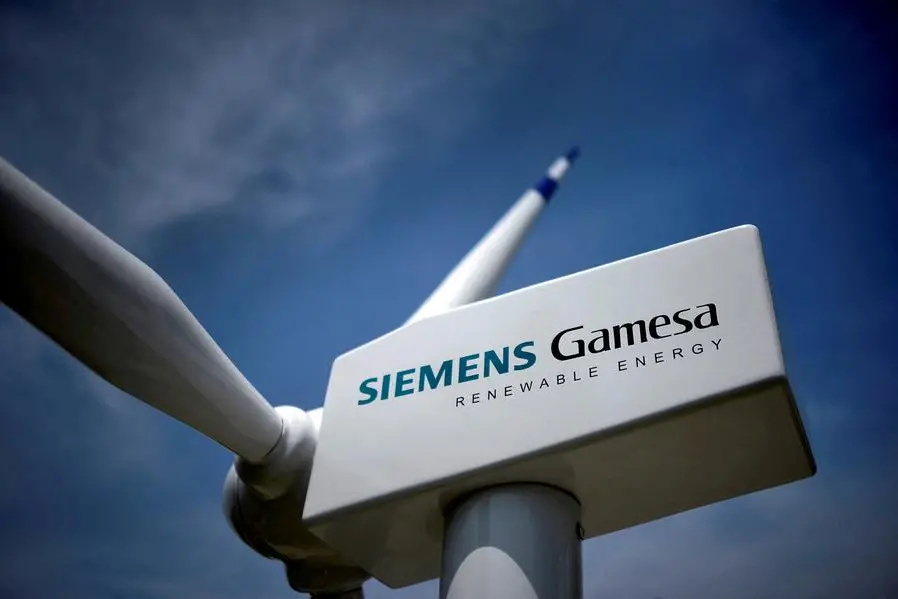
Siemens Energy shocked the wind sector in late June when it warned of faulty components and possible design faults in its onshore wind turbines
FRANKFURT/LONDON - Siemens Energy's disclosure of quality issues in its newer wind turbine models has exposed broader challenges in a sector suffering from rushed development, soaring materials costs and a flawed market design.
Siemens Energy shocked the wind sector in late June when it warned of faulty components and possible design faults in its onshore wind turbines.
It said it could not yet quantify the cost, but anticipated the issues would take at least 1 billion euros ($1.1 billion) to fix. Company sources, speaking on condition of anonymity, have said the final bill could be even higher.
The losses also highlight structural issues in a sector that has been in need of reform for years, according to sector advisers, industry executives and analysts.
Last year, the four biggest Western wind turbine makers - Vestas, GE, Siemens Energy's Siemens Gamesa and Nordex made combined sales of more than 41 billion euros. Combined losses exceeded 5 billion euros.
Wind farm owners at the same time earned a 15% operating margin, data from consultancy Wood Mackenzie showed, evidence of an uneven profit distribution in the sector.
Given the nature of contracts agreed before the recent inflation surge, the sector has struggled to pass on the increased cost of materials.
Energy majors that had been moving into renewable energy have to an extent retreated, under pressure from shareholders focused on the more reliable profits generated by oil and gas.
In the wind sector, Siemens Energy stands out because its turbine division resulted from a botched merger of two original equipment manufacturers (OEM) that gave rise to a culture of cutting corners and insufficient quality checks, people familiar with matter said.
Even so, "everybody was surprised by the magnitude," one of them said of the June disclosures, adding that Siemens Gamesa had been involved in too many parts of the value chain and that more needed to be outsourced to save costs and raise quality.
Analysts at brokerage Bernstein, outlining their bear case scenario for the problems at Siemens Energy, said the company's difficulties could be seen as "teething problems of an arms-race to expand blade diameter", dubbing the issue a potential "turbinegeddon" for the sector.
Some of the pressure for speed has come from European Union goals to increase renewable energy output to tackle climate change and, since Russia's invasion of Ukraine, to reduce reliance on imported Russian gas.
The EU wants wind energy to make up 43% of Europe's electricity consumption by 2030, up from 17% now.
At the same time, supply chain disruption linked to the COVID-19 pandemic has added to the difficulty of producing enough turbines.
Equipment-makers have raced to build bigger and more efficient turbines to keep up with rivals, without necessarily allowing time for quality checks.
"The strong competitive pressure along with the race for 'the latest and greatest' has forced manufacturers to shorten development cycles - and to offer prototypes," said Udo Schneider of Green Giraffe, which advises clients on large energy transition projects.
Siemens Gamesa's 4.X and 5.X turbines, the two onshore platforms at the centre of the company's problems, were introduced to the market within two years, a cycle industry experts say is too short.
ECONOMIES OF SCALE ELUSIVE
Even as demand has increased, the need to customise turbines to cater for individual markets and different wind speeds has prevented the sector from launching profitable mass production, industry advisers say.
Siemens Energy's rival General Electric, for example, posted a $2.24 billion loss at its renewable energy division in 2022, partly blaming "corrective measures and repair campaigns" in its turbine fleet.
To try to standardise production, raise quality and cut costs, GE has said it will reduce the number of rotor models it makes to four from 15, turbine covers to four from nine, and tower models to nine from 40.
Denmark's Vestas, too, has been making quarterly warranty provisions to cover increased turbine repairs and upgrades.
China, the world's largest renewables market is effectively closed to Western players, but industry sources say it is also affected by the issues of the wider sector.
"Industry wide, there's a problem of product testing and validation not being sufficient," said a source at one of China's largest wind turbine makers, who declined to be named.
"Before type testing is performed and validated, the order is already signed."
($1 = 0.9167 euros)
(Reporting by Christoph Steitz and Nina Chestney; Additional reporting by Rajesh Kumar Singh, Alexander Huebner and Dominique Patton; editing by Barbara Lewis)
FILE PHOTO: A model of a wind turbine with the Siemens Gamesa logo is displayed outside the annual general shareholders meeting in Zamudio, Spain REUTERS/Vincent West
New Contracts Awarded for 1 GW Floating Wind Project Offshore Scotland
The developers behind the Buchan floating offshore wind project, have awarded a series of contracts worth more than GBP 1.5 million to three Scottish companies.
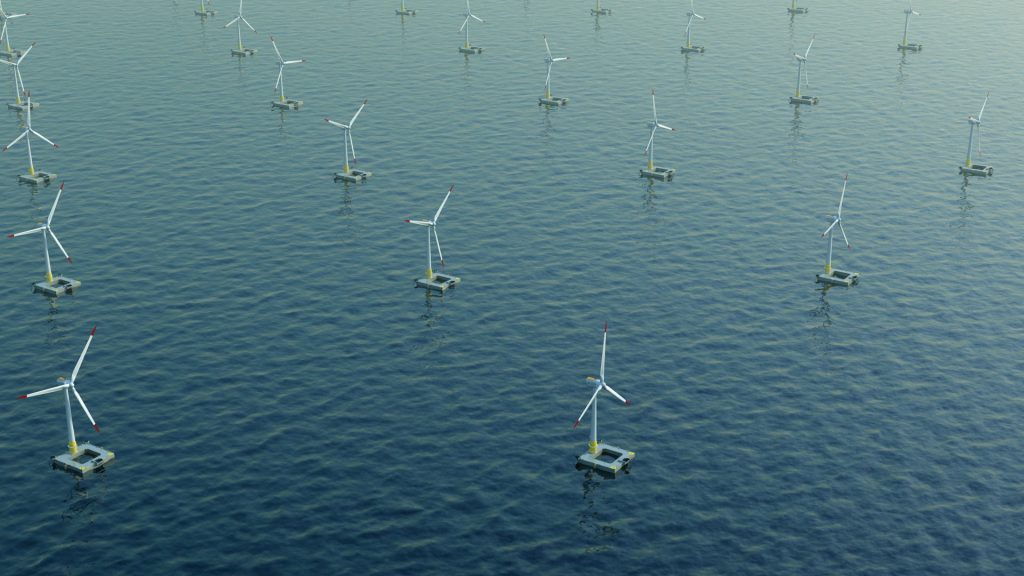
The 1 GW Buchan floating offshore wind project is being developed by the Floating Energy Allyance, a consortium comprising BW Ideol, Elicio, and BayWa r.e., which secured the rights for the project site at the beginning of last year through the ScotWind leasing round.
The three contracts were awarded to Copper Consultancy, who will support onshore and offshore stakeholder engagement and consultation, and to Natural Power, who will lead the onshore stakeholder engagement and Environmental Impact Assessment in parallel with their ongoing offshore work.
In addition, a contract was awarded to Blackhall & Powis, who will be responsible for property support, including securing land rights for the substation and onshore cabling, after having already delivered fishery liaison and early land assembly support.
According to its developers, this marks an important step forward within the development process of the project and brings the total value of contracts awarded to date to over GBP 20 million.
“The Buchan Offshore Wind project team continues to engage with National Grid’s Holistic Network Design process and are committed to rapidly progressing both onshore and offshore elements of the project“, said Alasdair MacLeod, Project Director at Buchan Offshore Wind.
The Buchan floating offshore wind farm is planned to have a capacity of approximately 1 GW, whose wind turbines will be installed on BW Ideol’s Damping Pool floating foundations.
Geotechnical and geophysical site investigation is being carried out some 75 kilometres off the Aberdeenshire coast, by Ocean Infinity.
French Companies to Form Floating Offshore Wind Joint Venture
France’s BW Ideol and its compatriot ADEME Investissement have entered into a final agreement for a funding injection to set up a new floating offshore wind company.

Under the contract, BW Ideol will transfer its co-development project portfolio to BW Ideol Projects Company with ADEME investing an initial EUR 17.85 million at the first financial closing date planned in September.
The first financial closing is subject to the completion of the reorganisation and, in particular, the approval by Crown Estate Scotland of the transfer of the ownership of BW Ideol’s share in the 1 GW Buchan offshore wind project, jointly developed with Germany’s Baywa and Belgium’s Elicion.
Subsequent capital injections will be based on project funding calls with a co-financing at an equal share between BW Ideol and ADEME Investissement, said BW Ideol, and when all funding calls are completed, each company will have invested EUR 40 million in the joint floating offshore wind firm.
Following the first closing, BW Ideol will own 75.8 per cent of BW Ideol Projects Company, representing a post-money valuation of BW Ideol Projects Company of around EUR 74 million, while ADEME is expected to increase its holding over time as further projects are matured and financed.
BW Ideol retains full ownership of its other business activities and assets, including technology and related IP and know-how portfolio, the floater EPCI business line and the exclusivity with the Port of Ardersier in Scotland for a floater production line, the Floatgen demonstrator, and the ownership in the EolMed offshore floating wind farm pilot.
BW Ideol will also retain all its teams, including engineering, business development, project execution, supply chain, legal, innovation, finance.
LATEST NEWS
- Iberdola’s Saint-Brieuc Offshore Wind Farm Delivers First Power
- US Clears Third Commercial-Scale Offshore Wind Farm to Start Construction
- Denmark Exploring Multiple Platforms as Alternative to Building Artificial Island
BW Ideol is the only floating technology provider with two full-scale assets in operation in France and Japan.
ADEME Investissement is a French State-owned investment company aiming at financing innovative infrastructure projects funded by the Investment for the Future Program.
Pakistan’s record flooding last year displaced millions and left the country reeling. As a new monsoon season approaches, recovery efforts are floundering.
Coco Liu and Faseeh Mangi
Published Jul 02, 2023 •
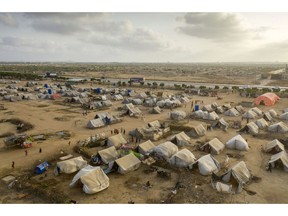
Article content
(Bloomberg) — When night falls in the refugee camp outside Karachi, Shanawaz Khoso worries about snake bites. The 38-year-old and his seven children sleep in tents alongside 5,000 other displaced villagers, partially exposed to the elements and to creatures that include scorpions and venomous snakes. When the sun rises, stifling heat and mountains of untreated sewage turn the camp into a breeding ground for disease. Fever and stomach pain are prevalent, but there are no doctors and there is no medicine.“We are living here out of necessity,” Khoso says. “Nothing is coming here now. We’re terrified.”
With monsoon season fast approaching, Pakistan has already seen heavy rains and strong winds resulting in dozens of fatalities, hundreds of injuries and damage to roads, houses and farmland. This year, though, the rain is falling on a country still reeling. Just 10 months ago, severe flooding in Pakistan killed over 1,700, displaced 8 million and cost the economy more than $30 billion.
Now crop shortages linger, thousands remain homeless and the country is struggling with rebuilding, food supply, health care and debt. Relief aid has largely dried up. As new rains threaten the same areas hit by last year’s floods, Pakistan finds itself at the mercy of a pernicious pattern: Climate change is driving more intense rainfall, which drives more intense flooding, which stymies recovery from past floods.
It’s a paradigm familiar to the other eight countries in what’s known as the Third Pole, which is facing the impacts of warmer air on both monsoons and melting mountain ice. Glaciers in Asia’s Hindu Kush Himalayan region could lose 80% of their current volume by the end of this century, according to a recent study, threatening the livelihoods of as many as 2 billion people downstream — roughly a quarter of the world’s population. Without effective mechanisms to finance their own recoveries, let alone prepare for future climate crises, developing nations are particularly unprepared. “Pakistan is an avatar for what happens when climate-vulnerable countries that are not climate-resilient are in the firing line of changed weather conditions,” says David Miliband, president of International Rescue Committee, a humanitarian aid group. “They’re on the front lines of something that’s going to be faced by other countries.”

